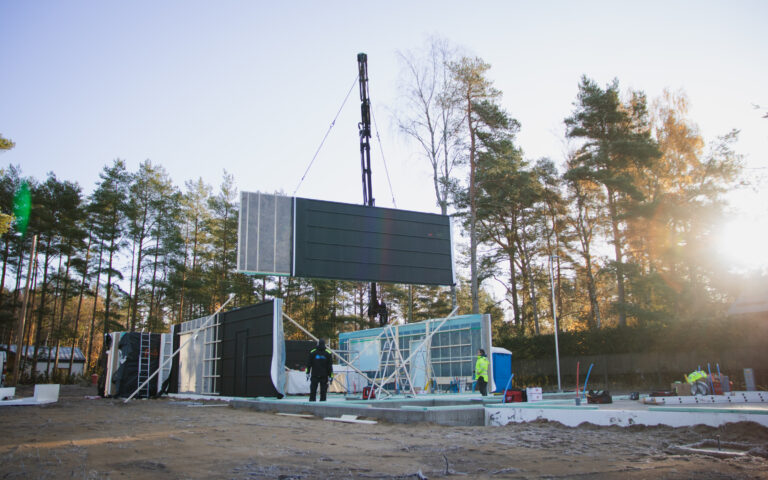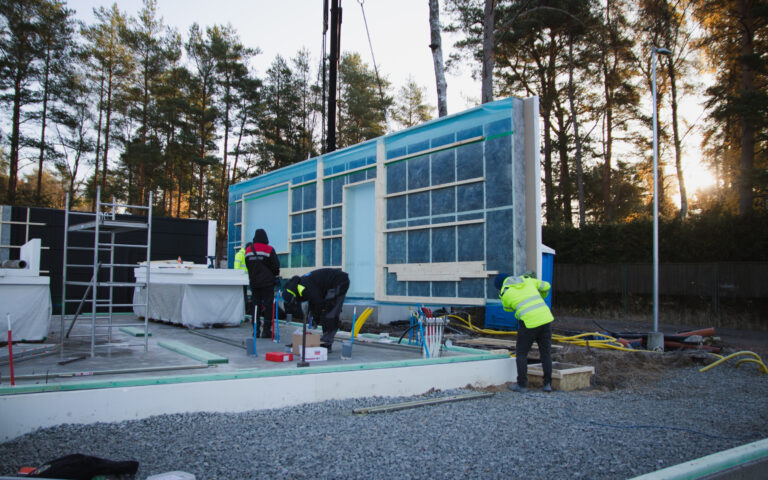When walls, ceilings, and roofs are manufactured in separate pieces in the factory with all or some external and internal layers, the process is known as element construction, often referred to as prefabrication (or modular building). These pieces are then loaded into trailers for transport to the construction site, where a crane unloads them, places them on the foundation, and connects them like a jigsaw. After the house is watertight, the plumbing and electricity are completed locally.
What are the advantages of element constructions?
As previously said, element construction is ideal for all homes. Element construction offers various advantages over conventional on-site post-and-beam construction, including:
- reduced material exposure to weather conditions such the sun and rain;
- less waste is generated on-site because most materials are precut for transport or comprise an element;
- less errors and inconsistencies because all components are meticulously created using software;
- we can raise the quality of our products since the plant maintains stringent and ongoing control over manufacturing;
- by creating the pieces, we reduce the amount of work that needs to be done on-site, which means less time, less disruption for your neighbors, and lower building costs.


